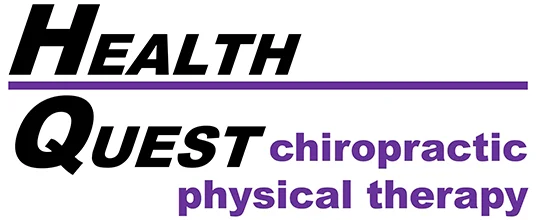Chiropractic Techniques Explained
At Health Quest Chiropractic and Physical Therapy we use a range of techniques to restore mobility, reduce pain, and support the body’s natural healing processes.
A gentle, low-force chiropractic technique that uses a small, handheld device called the Activator Adjusting Instrument. It delivers a quick, controlled impulse to specific areas of the spine or joints, aiming to restore motion and reduce pain without manual twisting or cracking.
Also known as the Thompson Drop-Table Technique, this method involves a special chiropractic table with segmented drop pieces. When the chiropractor applies pressure, the sections of the table drop slightly, assisting in spinal adjustments with minimal force. It’s commonly used for spinal misalignments and leg length discrepancies.
A repositioning technique primarily used for Benign Paroxysmal Positional Vertigo (BPPV). It involves a series of specific head movements to shift displaced calcium carbonate crystals (otoconia) in the inner ear, reducing dizziness and vertigo symptoms.
A light-touch chiropractic method that applies gentle pressure to the sacrum (base of the spine) to help balance the body's structure. This technique is often used for postural corrections, tension relief, and stress reduction.
A treatment where thin needles are inserted into trigger points (tight muscle knots) to relieve pain, muscle tightness, and dysfunction. Unlike acupuncture, which is based on traditional Chinese medicine, dry needling is rooted in Western musculoskeletal and neurological principles.
A therapy that uses suction cups placed on the skin to increase blood flow, reduce muscle tension, and promote healing. It’s commonly used in sports medicine and alternative therapies to address muscle pain, inflammation, and circulation issues.
A specialized approach to treating neurological disorders through non-invasive, brain-based therapies. It involves assessing nervous system function and using exercises, eye movements, balance training, and sensory stimulation to improve brain function, commonly applied for concussions, balance disorders, and chronic pain.
A soft tissue mobilization technique using stainless steel tools to break down scar tissue and fascial restrictions. It helps improve range of motion, reduce pain, and enhance muscle function, commonly used for sports injuries, tendonitis, and chronic pain.
A diagnostic system that evaluates muscle strength and body imbalances to assess structural, chemical, and emotional health. Practitioners believe muscle responses can indicate nutritional deficiencies, organ dysfunction, or misalignments. This technique is often used alongside chiropractic adjustments and holistic medicine.
A widely used chiropractic adjustment technique that applies high-velocity, low-amplitude (HVLA) thrusts to restore joint function. It typically produces the classic “popping” sound from gas release in the joints. This method is commonly used for spinal misalignments, pain relief, and improved mobility.
A gentle, hands-on spinal decompression technique that uses a specialized chiropractic table to stretch and flex the spine in a rhythmic motion. It is especially beneficial for treating herniated discs, sciatica, and spinal stenosis by relieving nerve pressure and improving mobility.
Schedule an Appointment
Don’t let pain hold you back from living the life you deserve. At Health Quest Chiropractic and Physical Therapy, our expert team is ready to provide the personalized, advanced care you need to recover, restore, and thrive. With convenient locations across Maryland—including Catonsville, Charles Village/Remington, Federal Hill, Glen Burnie, Owings Mills, Towson/Lutherville, and White Marsh—relief is never far away. Call today to schedule your appointment and take the first step toward lasting pain relief and better health.
